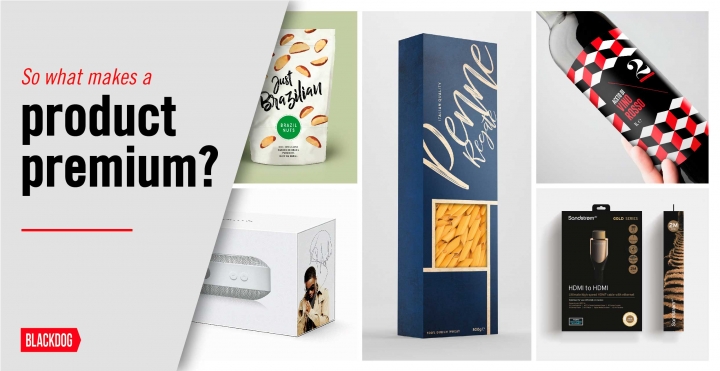
In The Meg Jason Statham takes off his shirt to fight a huge shark – the Megalosaurous. Not just a big shark, but a mega shark. The data folk at Euromonitor have just published their Megatrends 2018 report – not just big trends but… well, you get the idea.
Premiumisation is one megatrend that Euromonitor has earmarked for continued growth up to 2030.
At Blackdog, we’re excited about trends – they help us identify market white space for our clients as part of our brand and product development service. We tend to advise new brand creators to focus on customer needs when developing new products, so what’s happening at market level is vital for us.
A visit to the Packaging Innovations 2018 conference in September made it clear that more retailers and brands are now aiming at the lucrative higher end of the market.
That’s because there’s no such thing as a “premium” purchaser anymore – canny shoppers are mixing their shopping basket with low cost essentials topped up with the occasional premium purchase, saving money for occasional big ticket spends and treats. And this plays straight into the pockets of retailers who are upscaling their better quality private label ranges. Can’t afford Moët on Thursday night? A glass of Aldi Prosecco will probably do.
The figures add up. More expensive own-label lines across the market are growing in the UK – up 6.3% in summer 2018. That’s because better quality brand and private label products are a relatively easy trick for retailers to pull off.
So what makes a product premium? It’s usually a combination of compelling product story – hand picked, line caught, organic, small batch, artisanal and all the rest – with upscale packaging.
Research in Europe has shown that customers find it hard to differentiate between a mid-tier and a premium product if the packaging for the less expensive item is attractive, distinctive and meaningful – and we’re seeing that in the market.
What that means is that established high-quality brands who’ve previously played in the upper end of the market are now having a considerable chunk of their market stolen by private label ranges. What are their options? From what we’ve seen, they’re now starting to take their packaging and brand stories to a different level. And that’s another story entirely.